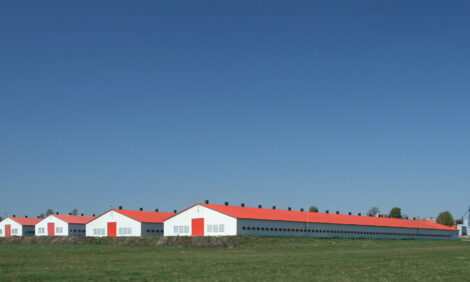



Joint Project Explores Sustainability of China's Poultry Industry
CHINA - Milestone results of a three-year joint project looking into the sustainability of China’s fast-growing poultry industry were recently announced in Beijing.The China Food Security Project is a collaboration among Sealed Air — a US company whose businesses cover food packaging solutions, cushioning and cleaning and hygiene solutions, World Wildlife Fund as well as the China Chain Store & Franchise Association, with supports from the Institute of Agricultural Economics and Development at the Chinese Academy of Agricultural Sciences.
The project aims to help improve China’s poultry supply chain, both to meet consumer needs and mitigate environmental as well as social impact of poultry production on the country’s ecosystem.
The programme started in 2014 with various work-streams, including an in-depth study of China’s poultry supply chain from slaughter to consumption in East China.
Research was conducted into each step of the supply chain, the various poultry circulation models such as wet markets versus supermarkets, and the key entities involved.
The study found that potential risks exist along the supply chain that impacts the quality and safety of poultry products. For example, the H7N9 bird flu outbreak in China in 2013 cost the country’s poultry industry more than 60 billion yuan ($8.8 billion).
Based on these findings, it identified opportunities to standardize the processes and specifications for slaughtering, storage and distribution, and to establish higher standards on quality and risk control.
“From farming right down to consumption, each private and public entity, including consumers, plays a critical role in enhancing food security and reducing food waste,” said Stefan Phang, Sustainability and CSR director for Sealed Air Asia Pacific.
A best management practices guide was created with a comprehensive checklist of food safety practices and procedures that can help reduce the loss of product due to contamination and spoilage along the poultry supply chain.
Another key program milestone was a quantitative environmental evaluation of different supply chain systems for packaged and unpackaged chicken, from farming to retail.
It suggests that a supply chain that incorporates improved farm processes, packaging and cold-chain methods has the potential to reduce greenhouse gas emissions by over 20 per cent.
According to the report, China’s poultry industry is the second-largest in the world. In 2014, Chinese poultry production reached 17.5 million tons, a tenfold increase from 1985, and is expected to reach 20 million ton by 2020.
In light of this growth, China’s poultry industry has significant opportunities to increase access to safe, nutritious food while helping to conserve natural resources and preserve vital ecosystems, it says.
The China Food Security Program is nearing its completion and the programme collaborators are now embarking on industry and consumer engagement efforts to help key stakeholders make informed choices on quality control, safety risk mitigation and waste reduction.








